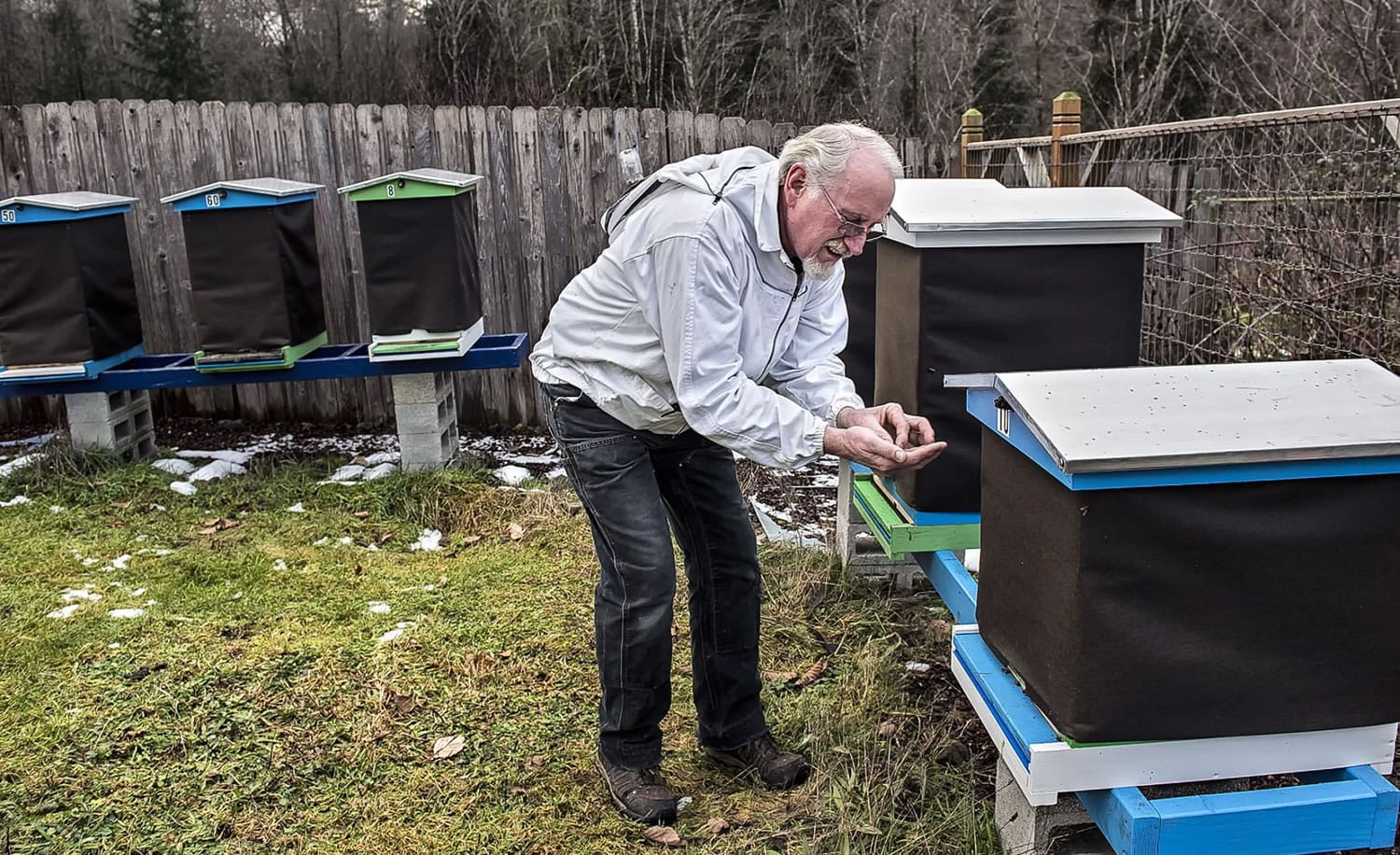LONGVIEW — On a snowy weekday, several bees lay still beneath a small strainer. Doug Penning, who tends to 20 bee colonies at his Coal Creek-area home, earlier had scooped up the bees, which were paralyzed by the cold. One by one, they slowly regained life.
Penning said he does this often. He warms the bees in his hands before taking them indoors. Inside Penning’s bee lab are the spoils of caring for the insects — large jugs brimming with amber-colored honey. But Doug emphasized he doesn’t keep colonies for the sweet stuff — he does it for the bees.
“I love bees. If they didn’t make any honey one year — fine. Maybe next year, girls,” he said, referring to the worker bees, which are all female.
Penning, now retired, has maintained hives for years and is president of the Cowlitz Beekeepers Association. In the late spring, he’s the familiar face many people call to collect buzzing swarms from their property. Unfortunately for Penning, though, there are a number of threats to the honeybee population to which he’s devoted himself. Among them is colony collapse disorder — a phenomenon that occurs when a colony of worker bees disappears. The exact cause is a mystery, making finding a solution complicated.



